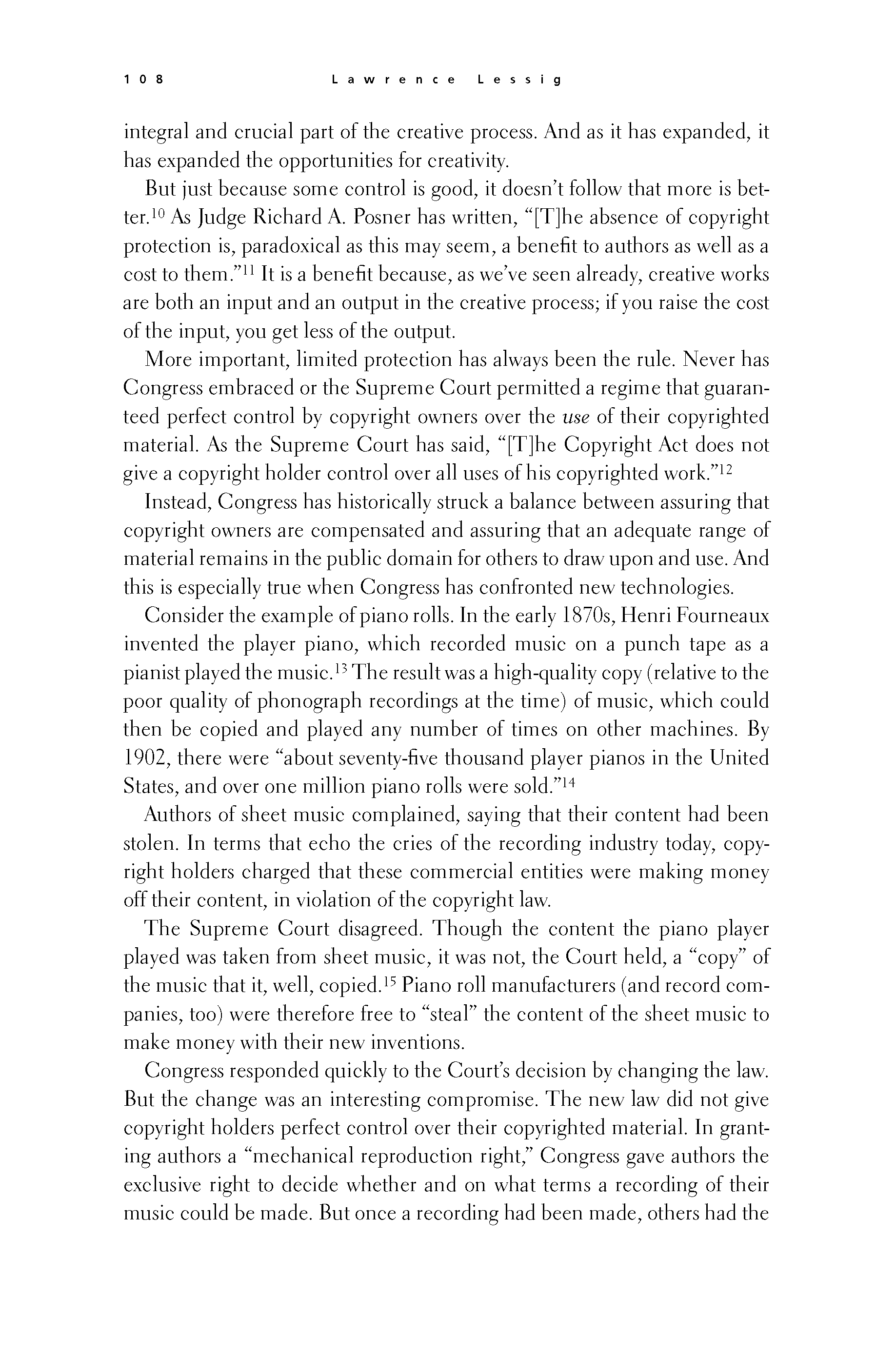 p107 _
-chap- _
toc-1 _
p108w _
toc-2 _
+chap+ _
p109
p107 _
-chap- _
toc-1 _
p108w _
toc-2 _
+chap+ _
p109
integral and crucial part of the creative process. And as it has expanded, it
has expanded the opportunities for creativity.
But just because some control is good, it doesn't follow that more is bet-
ter.[7-10] As Judge Richard A. Posner has written, "[T]he absence of copyright
protection is, paradoxical as this may seem, a benefit to authors as well as a
cost to them."[7-11] It is a benefit because, as we've seen already, creative works
are both an input and an output in the creative process; if you raise the cost
of the input, you get less of the output.
More important, limited protection has always been the rule. Never has
Congress embraced or the Supreme Court permitted a regime that guaran-
teed perfect control by copyright owners over the _use_ of their copyrighted
material. As the Supreme Court has said, "[T]he Copyright Act does not
give a copyright holder control over all uses of his copyrighted work."[7-12]
Instead, Congress has historically struck a balance between assuring that
copyright owners are compensated and assuring that an adequate range of
material remains in the public domain for others to draw upon and use. And
this is especially true when Congress has confronted new technologies.
Consider the example of piano rolls. In the early 1870s, Henri Fourneaux
invented the player piano, which recorded music on a punch tape as a
pianist played the music.[7-13] The result was a high-quality copy (relative to the
poor quality of phonograph recordings at the time) of music, which could
then be copied and played any number of times on other machines. By
1902, there were "about seventy-five thousand player pianos in the United
States, and over one million piano rolls were sold."[7-14]
Authors of sheet music complained, saying that their content had been
stolen. In terms that echo the cries of the recording industry today, copy-
right holders charged that these commercial entities were making money
off their content, in violation of the copyright law.
The Supreme Court disagreed. Though the content the piano player
played was taken from sheet music, it was not, the Court held, a "copy" of
the music that it, well, copied.[7-15] Piano roll manufacturers (and record com-
panies, too) were therefore free to "steal" the content of the sheet music to
make money with their new inventions.
Congress responded quickly to the Court's decision by changing the law.
But the change was an interesting compromise. The new law did not give
copyright holders perfect control over their copyrighted material. In grant-
ing authors a "mechanical reproduction right," Congress gave authors the
exclusive right to decide whether and on what terms a recording of their
music could be made. But once a recording had been made, others had the
[[108]]
p107 _
-chap- _
toc-1 _
p108w _
toc-2 _
+chap+ _
p109